- Administrator
- Albums and Singles

ALTER presents a remastered edition of Cremation Lily's second album, on vinyl for the first time. Recorded whilst living in Hastings and originally released as a double cassette on his Strange Rules label in 2017, The Processes… forms a trilogy of albums in the CL canon that were influenced by the life and atmospheres within British coastal towns. Composed using a rudimentary set-up of synth, drum machine and two modified walkmans, CL draws upon a broad range of influences from the underground electronic music spectrum. Noise, tape music and ambient techno are all referenced and align to form a cohesive collection of tracks, flowing fluidly in sequence. Melancholic synth pads and deep kick drums intersect with crude field recordings and occasional bursts of feedback, evoking a claustrophobic uncertainty that feels more like being pulled under than carried above.
Features additional piano and violin by Theodore Cale Schafer.
More information can be found here.
Read More
- Administrator
- Albums and Singles
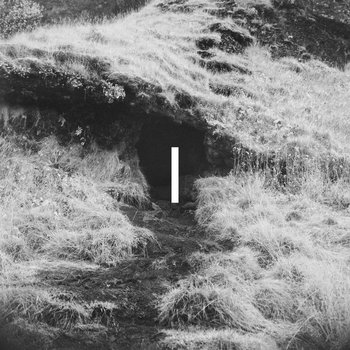
Through A Vulnerable Occur is the result of a dialog between the photographer Sophie Gabrielle and the musician Seabuckthorn, initiated by IIKKI, between June 2019 and February 2020.
The complete project works in two physical imprints:
a book and a disc (vinyl/cd)
it should be experienced in different manners :
the book watched alone
the disc listened to alone
the book and the disc watched and listened to together.
___________________________________________________
Seabuckthorn is an alias used for the solo work of English acoustic guitarist & multi-instrumentalist Andy Cartwright since 2009.
He uses finger picking & bowing techniques combined with various open tunings to form a mixture of approaches, often with layered accompaniments. Generally the songs lean towards to the experimental genre, whilst on the edge of the ambient and folk.
Through A Vulnerable Occur is his 9th releases.
____________________________
Sophie Gabrielle is a Melbourne based contemporary photographer and curator working in both analog and digital mediums. Graduating from Photography Studies College, Melbourne in 2015, she has been one of the Lensculture Art Awards finalist in 2018, then Foam Talent winner in 2019. Her work has been exhibited in Australia, Malaysia, New York and the UK. Through her fine art practice, Sophie has channeled her interest in mythology, spiritualism and psychology to create poetic works that reflect our sense of self, place and the ambiguity of memory. Her works are an exploration into the world of the unseen, through optics, chemical interactions and the investigative processes used to photograph something invisible to the naked eye.
More information can be found here.
Read More
- Administrator
- Albums and Singles

Five years on since their last joint outing in Stroboscopic Artefacts Monad series, Speedy J and Lucy team up again as Zeitgeber on Seventeen Zero Four, a new three-tracker descending deep into the filthy, tenebrous outskirts of club music. Torchbearers of techno as a life-affirming vehicle for human expression, as can be experienced through their multi-dimensional back catalogue of solo records and shared extended performances at some of the finest clubs and festivals around the globe, it's safe to say Jochem and Luca share a certain taste for taking things off the beaten path and into new perspectives. True to their bold approach towards production, "Seventeen Zero Four" proudly continues the pair's tradition of chiselled floor-focused shifts and divagations outside the ring-fenced domain of no-nonsense 4/4 mechanics initiated on their self-titled debut album in 2013.
Drawing first blood, the title-track "Seventeen Zero Four" submerges us in a state of amniotic solitude as hell’s all set to break loose around. Sonar bleeps drip and dissolve across invisible plateaux as thunder rumbles and roars in the distance, mirroring and shattering all linearity between the bars. "One Zero Five" then implements a further straightforward groove, sequenced hats and kicks carving out a more familiar scenario for the dancers to appropriate, whilst maintaining that oddball, slightly off kind of minimal, dubbed-out blur. Rounding off the package, "Twenty Zero Two" throws further jazz into the mix, letting its sine curves hula hoop into the upper layers of the outer-audio-space as a shrewdly engineered industrial swing drops the hammer for an epic last stretch.
More information can be found here.
Read More
- Administrator
- Albums and Singles

Following 2018's acclaimed collaboration with Simon Fisher Turner, Care, Swedish sound artist Klara Lewis returns with "Ingrid", her third solo release for Editions Mego.
Ingrid is a departure from Lewis's previous solo outings, drifting from the eerie rhythmic variations of Too and Ett and moving assuredly into long-form experimentation. The piece retains those records' pulsing core and builds on a single cello loop that is steadily enveloped by a surge of distortion. It's almost like a voice or chant, shifting pointedly from a whisper into a scream before singing peacefully into the light.
At times, Ingrid reminds of William Basinski's looping melancholy or Steve Reich's controlled and innovative phase experiments, while at others, it recalls the chaotic Scandinavian physicality of black metal. Yet the entire composition is anchored in Klara Lewis's distinct emotional world. By dissolving familiar and beautiful strings in baths of noise, Lewis allows something violent but tender to grow in its place. In a society struck through by cynicism, Ingrid is a cathartic listening experience and a beacon of hope.
More information can be found here.
Read More
- Administrator
- Albums and Singles
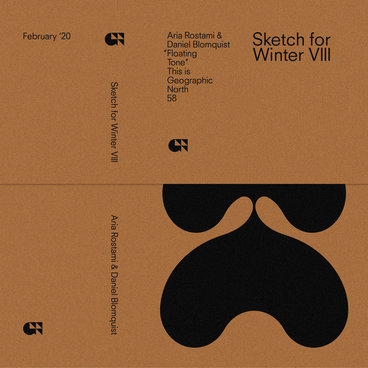
**The eighth installment in Geographic North's long-running Sketch for Winter series, which highlights compositions intentionally crafted for the colder season.**
Unsung heroes of the ambient underground, Aria Rostami and Daniel Blomquist have quietly created some of the most aurally alluring sounds released in the past five years. And although that time has solidified the duo's prowess of production and tenacity of texture, it has also shown its share of disruption and disorder. Having met and recorded all of their past works together in San Francisco, Sketch for Winter VIII: Floating Tone marks the first release made by the pair apart, with Rostami’s recent move to Brooklyn. But rather losing touch or stalling collaboration, the duo’s bond only grew stronger.
Rather than perform live improvisations in the same room, Rostami and Blomquist repeatedly passed material back and forth to be altered over time - sometimes involving extensive alterations, and others barely none. The result brings an astoundingly varied mix of melody, texture, and movement.
"The Sloping Tower" seeps into focus in a haze of pristine clatter, celestial chords, and synthetic detritus. Distant disembodied voices appear through rippling waves of melody, leaving only a tapestry of tattered sound. "The Sleeping Floor" meanders with a nocturnal melody that lulls and placates with a deft, delicate touch. A-side closer "The Guessing Hand" cultivates a seething but subtle soirée of nonchalant noir, suggesting some solemn and forgotten subterranean piano bar.
"The Running Glass" wafts in a cloud of blissful warmth, backlit with dimmed glee and neon vibrancy. "The Sinking Tone" turns the focus back to our piano, heaving in a lush and all-consuming storm of shimmering texture and noise. "The Floating Table" closes things out with utter resolve, reflecting on the receding action and dabbling in some amorphous beauty.
It's a powerful new chapter in Rostami and Blomquist's journey that solidifies their past and suggests endless opportunities ahead.
More information can be found here.
Read More
- Administrator
- Albums and Singles
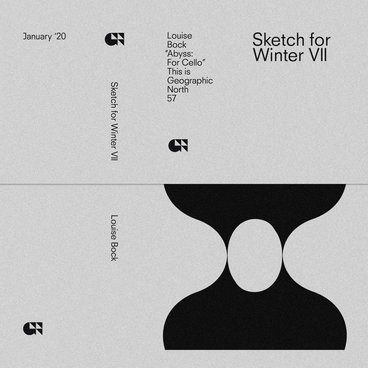
**The seventh installment in Geographic North’s long-running Sketch for Winter series, which highlights compositions intentionally crafted for the colder season.**
Louise Bock is the nom de guerre of Taralie Peterson, a venerable veteran of the American avant-garde. Whether solo or together with Ka Baird as Spires that in the Sunset Rise, Peterson has spent nearly two decades exploring the outermost limits of ecstatic, free jazz-influenced improvisation. The sonic range of Peterson's opulent oeuvre is matched only by the variety of instruments she employed, including but not limited to voice, saxophone, clarinet, guitar, banjo, lap harps, mbira, spike fiddle, and so on. Now, under the sobriquet Louise Bock and focusing solely on the cello, Peterson returns with Abyss: For Cello, a profound work of considered minimalism composed during and intended for the dead of winter.
Deciding to focus entirely on the cello, Peterson rid herself of any other self-imposed rules, analysis, and judgment that ultimately unlocked unforeseen revelations. Opener "Horologic" offers a sustained seethe of heaving, serrated textures. "Jute" offers a dynamic run of striated tones that slowly dissolve into a pool of peaceful resolve. "Actinic Ray" brings a kaleidoscopic blur that offsets heaving lurches of chordal sound with almost acrobatic flecks of melody. "Oolite," featuring Kendra Amalie on guitar, is an engrossingly unsettling piece of auditory hysteria, balancing a fascinating and fine line between allure and aversion. Closing track "Prithee" prolongs a potent interplay of deep, dense resonance and exquisitely elegant static.
Through these ruminations, Peterson's cello exposes immense beauty, sorrow, and joy that is altogether deeply hypnotic and discreetly haunting.
More information can be found here.
Read More
- Administrator
- Albums and Singles
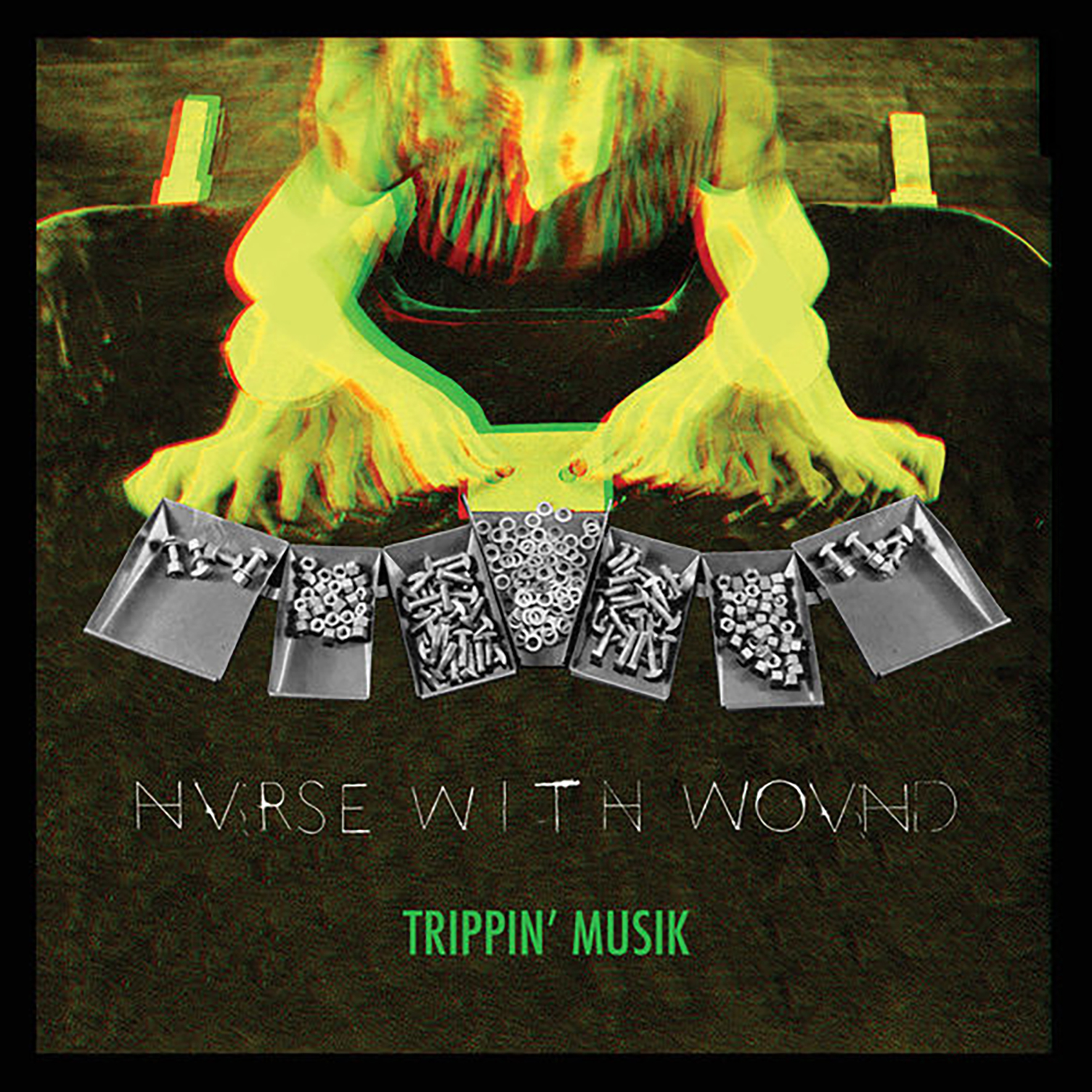 As a longtime NWW fan, the prospect of an ambitious, long-gestating triple LP release entitled Trippin’ Musik naturally filled me with glee and anticipation, as I envisioned another Soliloquy For Lilith-level classic. That enthusiasm remained undampened by the jabbering and splattering loop lunacy of Experimente II: Son of Trippin’ Music, as it seemed like that was intended as more of an outtake collection than a teasing glimpse of what was to come. As it turns out, however, it was very much the latter, as Trippin' Musik is often an obsessively loop-driven affair that basically expands upon Experimente II rather than transcending it. That is not necessarily a bad thing, but Trippin’ Musik is occasionally surprising in both its extremity and single-mindedness. This is a bizarre and challenging album even by Nurse With Wound standards.
As a longtime NWW fan, the prospect of an ambitious, long-gestating triple LP release entitled Trippin’ Musik naturally filled me with glee and anticipation, as I envisioned another Soliloquy For Lilith-level classic. That enthusiasm remained undampened by the jabbering and splattering loop lunacy of Experimente II: Son of Trippin’ Music, as it seemed like that was intended as more of an outtake collection than a teasing glimpse of what was to come. As it turns out, however, it was very much the latter, as Trippin' Musik is often an obsessively loop-driven affair that basically expands upon Experimente II rather than transcending it. That is not necessarily a bad thing, but Trippin’ Musik is occasionally surprising in both its extremity and single-mindedness. This is a bizarre and challenging album even by Nurse With Wound standards.
A strong case could be made that the vinyl version of Trippin’ Musik is the logical culmination of several conceptual threads that have always driven Steven Stapleton's work, as it combines a lavish visual presentation with a playfully twisted and enigmatic "hall of mirrors" approach to the actual music.It is both an art object and a kind of surrealist game of chance: some songs are weirdly beautiful and immersive, while others are grinding, one-dimensional endurance tests.None of the songs or records are numbered or identified, so the album's sequence is dictated entirely by the choices of the listener (and those choices will unavoidably be blind ones at first).The newly issued CD version, on the other hand, offers a significantly altered and enhanced version of the Trippin’ Musik experience, as there are actual song titles and an ostensible sequence.I definitely appreciate the former and I also quite like the digital format, as using the "shuffle" feature enables probability to dictate the sequence rather than my own vague memories of which colored record I liked the most.I also like the clarity of the digital version, as some of the nuance and detail is definitely lost in the omnipresent crackle and hiss of my record player.The differences between the two formats go much deeper than that, however, as the CD version throws in roughly 35 minutes of new material and excises almost half of the material from the pink record (basically 15 minutes of rhythmic metallic scraping that I definitely do not miss).Consequently, the CD version is considerably more melodic and listenable than its harsher predecessor.
Notably, one of the new pieces (the 20-minute "Or") now opens the album, which dramatically transforms its overall feel and trajectory."Or" does contain some elements of the now-deleted piece from the pink record though, as it eventually locks into a similarly heaving and metallic pulse.However, it is considerably more compelling in other ways, as it undergoes significant transformation over the course of its journey, slowly building from simmering tension and hallucinatory feedback drift into a massive, churning mindfuck.It is followed by the brief and delightful "The" (plucked from the pink record), which unfolds as warm and bubbling reverie of shivering and shimmering synth-like loops.In classic Stapleton fashion, however, that pleasant interlude ends abruptly to make way for the album's most relentlessly and obsessively sanity-destroying piece ("Fall"), which mercilessly jabbers in a locked-groove style loop for almost 20 punishing minutes.It basically sounds like a room full of shuddering and puttering old engines, but with an uneasy "squirming" element thrown into the cacophony as well.Naturally, that piece ends in jarring and abrupt fashion as well, but it unexpectedly gives way to the surprisingly understated and composed-sounding "Of," which kind of resembles a German Expressionist Horror twist on jazz. It is a truly inspired and disturbing piece, as it feels like it was once something quite melodic but has since been slowed and stretched into a curdled and reverberant abstraction.It calls to mind an imaginary film noir in which the requisite seductive chanteuse is performing in a smoky nightclub, except that everyone and everything is slowly rotting and melting and all the sounds are smearing queasily together.
The second disk also opens with an entirely new piece ("The") and it is another interesting one, as it feels like a considerably less disturbing extension of the previous "Of."Instead of distending and smearing into a phantasmagoric hellscape, however, its foundation of lurching and stammering slow-motion percussion gradually blossoms into a meditative haze of buzzing string drones and gently pulsing, rippling guitar chords.At times, it almost sounds too sun-dappled and benignly psychedelic to be a Nurse With Wound piece, but it also sometimes sounds like a rehearsal tape of Barn Owl/Calexico-style desert rock being played at the wrong speed.The following "Eye" then makes a triumphant return to the "nightmare jazz" aesthetic of "Of," which is the aesthetic niche where Trippin’ Musik truly shines.In fact, "Eye" is easily one of the strongest pieces on the album, unfolding as a spacious and heady swirl of flickering, time-stretched female voices and flanged metallic swells.It evokes the sensation of being lured into a hallucinatory forest of swaying metal trees by some kind of half-malevolent/half-seductive forest nymph, which is a stylistic niche that certainly warrants further exploration.
The remaining two songs seem to the ones from the green vinyl, albeit in remixed and altered form.Both are among the finest pieces on the album, though they take very different directions.For example, "OF" essentially unfolds like a complex and multilayered 20-minute loop, but it is a remarkably hypnotic and absorbing one, as snatches of vocals warble and flutter inside a mechanized, churning pulse that is slightly out of phase.The closing "Sound," on the other hand, actually sounds like the work of a tight, focused, and unexpectedly melodic band.It is quite a lovely piece and is all the more striking for how nuanced, deftly arranged, and purposeful it feels, as it has an actual groove and a lazily burbling and shifting melodic figure.More importantly, it is allowed to run its entire course without being pulled apart, mangled, and dragged into darker, uglier territory.
I would be curious to know what led Stapleton to make the vinyl and CD versions of this album so different, as it genuinely seems like the latter is a punched-up and improved release rather than just the same album with added material thrown in.When I first listened to the vinyl edition, I actually found myself somewhat mystified that this album had taken so long to make, as the pink record just seemed like two abrasive loops stretched out for 20 minutes each. Given Andrew Liles' extreme work ethic, that seems like something that could have been knocked off in a single afternoon.Now that the whole album has been rearranged, enhanced, and re-edited, however, Trippin’ Musik feels like a considerably more coherent and focused statement.In fact, I think it could have been one of NWW's stronger albums if it had been edited even more aggressively than it was, though I imagine the allure of releasing an attention-grabbing triple LP epic was impossible to resist.I certainly was not immune to the appeal of that approach myself and can find plenty to like about both versions of the album.However, Trippin’ Musik could have easily been an album that I absolutely loved if it had been paired down to just "Of," "Eye," and "OF" (with "Sound" possibly throw in as a chaser).That said, I am about forty years too late if I want to convince Steven Stapleton of the (financially ruinous) merits of being much more selective in what he releases.Embracing imperfection and indulgence is inherently part of being a life-long Nurse With Wound fan, as the occasional rewards are usually worth it.They certainly are in this case, as Trippin’ Musik fitfully shows that Steven Stapleton and his collaborators are just as capable as ever at conjuring up distinctive and radical sound art unlike that of anyone else.
Samples:
Read More
- Administrator
- Albums and Singles

Originally composed by Maggi Payne between 1984-1987 for the performance group Technological Feets. Formed by video artist Ed Tennenbaum in the San Francisco Bay Area in 1981, the group combines dance, live video processing and music.
Ahh-Ahh was first released in 2012 on Root Strata. Composed on an Apple II computer & various early sampling devices, Payne's compositions are a vibrant response to the call from the moving body. Populated with buoyant pulses, graceful analogue swells, dense fog-like drones and cascading rhythms that shift in space, Ahh-Ahh is a vital document of not only these early collaborations, but of computer based music as well. She studied with many greats in the field, including Gordon Mumma, Robert Ashley & David Berhman.
Fully immersive electronic music by US composer Maggi Payne, inspired by the arctic winds. Maggi Payne's sound worlds invite the listeners to enter the sound and be carried with it, experiencing it from the inside out in intimate detail. The sounds are almost tactile and visible.
The music is based on location recordings, with each sound carefully selected for its potential—its slow unfolding revealing delicate intricacies—and its inherent spatialization architecting and sculpting the aural space where multiple perspectives and trajectories coexist. With good speakers, some space in your schedule, and a mind-body continuum willing to resonate with Payne’s electroacoustic journey, but then it will take you to places that other music can’t reach.
From the sounds of dry ice, space transmissions, BART trains, and poor plumbing she immerses the listener in a world strangely unfamiliar. Maggi Payne is a composer, video artist, recording engineer, photographer, and flutist and is Co-Director of the Center for Contemporary Music and a faculty member at Mills College, in the San Francisco Bay Area.
More information can be found here.
Read More
- Administrator
- Albums and Singles
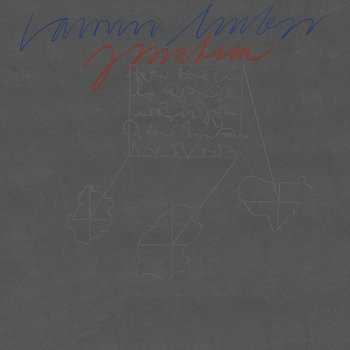
Laurin Huber is a prolific figure in the Swiss underground for experimental music and arts. He has been active as a musician and producer in a slew of projects like Wavering Hands, Frederik or legendary Swiss institution Krankenzimmer 204. Having just released his first solo release under the R.E.R. moniker on the label Edipo Re, co-founded by Huber and frequent collaborator Rolf Laureijs in 2016, he now presents his first album under his given name.
Thematically, Juncture is perfectly in line with Huber’s approach of thinking globally and acting locally. Highlighting the singularity of specific musical concepts while embedding them firmly in a collaborative network has been the crucial guiding principle in his work for Edipo. The four tracks on Juncture aim to work with "superimpositions, interactions, interferences and modes of co-existence," as Huber explains. "I'm generally interested in thought that tries to look at the world beyond dualisms," says the artist. "Contemporary feminist theory and philosophies of difference, the critique of dualities such as nature/nurture, body/mind, object/subject or anorganic/organic are therefore important reference points."
On a musical level, this means working with overlaps and interfering layers, field recordings as well as synthesizers and the experienced drummer's knack for intricate rhythms. Over the course of more than half an hour, the producer brings together dreamlike synthesizer pieces with stripped down mid-tempo techno pieces, feverish echoes of industrial music and swelling sounds that are juxtaposed with subtle rhythmic counterpoints. In a world in which dualities reign and polarization increases both socially and culturally, Junction serves as an invitation to deconstruct binary thinking by affirming the coexistence of allegedly opposed elements. It does so with striking emotional ambiguity, sometimes lulling in its audience with soothing sounds and in the next challenging them with an ominous atmosphere.
More information can be found here.
Read More
- Administrator
- Albums and Singles

Ellen Fullman began developing The Long String Instrument in her St. Paul, Minnesota studio in 1980 and moved to Brooklyn the following year. Inspired by composer and instrument builder Harry Partch, Fullman's large-scale work creates droning, organ-like overtones that are as unique in the world of sound as her vision of the instrument itself.
Along with her 1985 debut album – appropriately titled The Long String Instrument – Fullman's only output in the 1980s would be two self-released cassettes, In The Sea and Work For Four Players And 90 Strings, recorded in 1987 at an unfinished office tower in Austin, Texas. This double LP collection features music from both cassettes as well as a previously unreleased piece from 1988 at De Fabriek in Den Bosch, Holland.
Ethereal and exquisitely paced, these rare recordings capture minimalism's quiet radiance. Within a musical landscape that has seen the rise of contemporary drone practitioners like Ellen Arkbro and Kali Malone, Fullman is sure to find a legion of fans.
Superior Viaduct is honored to present this long overdue archival release that marks a particularly vibrant period of Fullman's pioneering and timeless work.
More information can be found here.
Read More
- Administrator
- Albums and Singles

Diamanda Galás' debut album The Litanies of Satan, originally released on Y Records in 1982, is reissued on the artist's own Intravenal Sound Operations label in LP, CD and digital formats. The album has been meticulously remastered from the original Y Records analogue tapes by Diamanda and engineer Heba Kadry and features the original classic artwork of that release. Vinyl includes poster.
This the first release in a new reissue campaign since Diamanda regained ownership and control of her entire catalogue in 2019.
-"The Litanies of Satan" (from the poem by Charles Baudelaire)
Devotes itself to the emeraldine perversity
of the life struggle in Hell.
-"Wild Women with Steak-Knives"
(from the tragedy-grotesque by D. Galás "Eyes Without Blood")
Is a cold examination of unrepentant monomania,
the devoration instinct, for which the naive notion
of filial mercy will only cock a vestigial grin.
More information can be found here.
Read More

